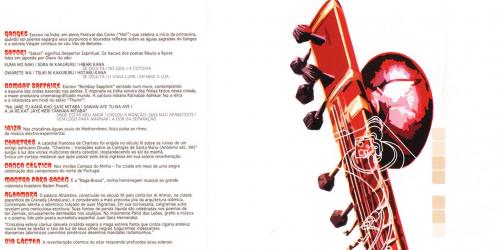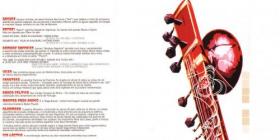
What most people forget in trying to blend various influences, is to draw a line between art and fart.
Consider yourself lucky if you haven’t yet been exposed a musical menace that calls itself ‘Ska.’ To give you a taster, here’s a small anecdote involving a couple of blokes who had vowed to abstain from cursing and swearing for a week:
Beleaguered Bengali fellow: … That was low… You, sire, are no better than the front man of Simple Plan.
Asinine Ass: Oh, go suck an egg! Better yet, go play in a Ska band!
But that was not my point. What I wanted to tell and show you, rather, was how some bands, more than others, have very successfully fused Indian influences and instruments within their music.
3: Alberto Marsicano: “Samadhigh”
The sitar today is synonymous with the Shankars, father and daughter. We have seen the sitar being incorporated in music of various vintages: from the 60s – The Rolling Stones’ ‘Paint it, Black’ – to the 90s, with Metallica’s “Wherever I May Roam,” but only as a cameo appearance at best.
Finally, somewhere in the heartlands of Brazil, Alberto Marsicano, who had previously been playing Sitar-Rock covers of Led Zeppelin and Black Sabbath, attained nirvana by bringing out the best of lounge music and psychedelic sitar jams.
And as a follower of such worldly wisdom, it is my duty to bring to you a small sample of the same:
2: Parikrama: “Open Skies”
[youtube_video id=w1AMm2ApuLg]
1: Indialucia: “Raag ‘n’ Ole”
Aptly named to reflect their influences – classical music from India and flamenco from Andalusia in Spain – their music is the epitome of a match made in heaven. According to Miguel Czachowski, the guitarist, flamenco, traditionally a form of Gypsy music has its origins in India.
Bonus! Here’s something that many of you may recognize from Channel V:
Cyd The Squyd has been drawing the line between Arts and Farts since 2011 (ladies). Smelling noxious is only a deterrent for lesser mortals.
You can smell more of his odorous ordinance here.








